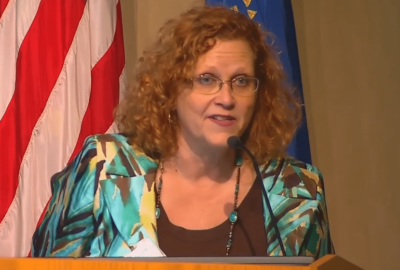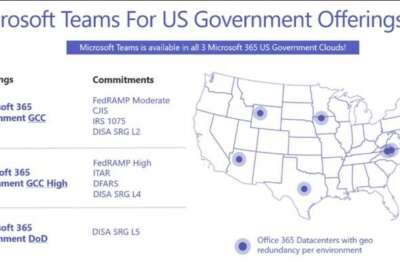 Exclusive
Exclusive Creating a ‘safe space’ for trying new modernization techniques
Government agencies, some more aggressively than others, are looking for ways to modernize their digital practices and make them stick.
Government agencies, some more aggressively than others, are looking for ways to modernize their digital practices and make them stick.
Alex Pandel, Design and Product Strategist at 18F, was the project lead for a report on “The Best Practices in Digital Transformation.” 18F is the General Services Administration’s digital consulting wing. Pandel’s team investigated what leads to positive and long-term modern digital practices within a government entity beyond a single innovation project.
“A diverse perspective” is very useful, Pandel told Federal News Network Executive Editor Jason Miller. She said that while working on the report, it was interesting to the perspectives of all levels of workers and management. Although not conflicting, from the ground level to the leadership level, things are viewed with different eyes.
“It definitely did yield some different perspectives, but they kind of reinforced each other in a way that was really natural,” she said on Federal Monthly Insights — Digital IT Modernization.
She said one person is not going to transform an agency.
“It takes multiple levels and multiple folks working together,” Pandel said on Federal Drive with Tom Temin.
The goal of the research was to be precise, specific and produce a product that could be “actionable.” They also wanted people to know what the 18F team meant by “digital transformation.”
“We also wanted to make sure we grounded our findings in specific examples, rather than just ending things with sweeping generalizations,” she said.
A few things stood out in the report. First, when teams have extreme technical debt or infrastructure debt, that makes it impossible for teams to iterate rapidly. Next, there were challenges to articulate the benefits and value of transformation and make it concrete so you continue to invest in it.
The “hierarchy of government” can make it challenging to have empowered teams, which can make project-level decisions without having to run it up the leadership chain. Pandel also said failing to connect with the end users “is a really big deal.”
“At the end of the day, there’s no better motivation to try a new approach or think creatively about a problem then actually having to witness someone … struggling with that problem,” she said.
The work of transformation is time-consuming and it’s good to have direct feedback. Pandel added that watching users interact with a service that makes tasks easier is especially motivating, and that it’s important to build long-term, cross-functional teams.
“Traditionally in government, different functions are often kind of siloed across an agency. The policy folks work separately from IT folks, who work separately from the procurement folks and then the vendors are off in a different part of the agency,” Pandel said. “And we’ve seen it time and time again, how important it is to actually bring all of these diverse perspectives together to work side-by-side – not just like at a meeting here or there – but like actually as one team, day to day, from the very beginning of project.”
It is imperative, Pandel said, to “create cross pollination” as you “create a safe space for trying new things.” Cross functionality helps expose the user needs and push the agency forward together.
“The agencies that we worked with, who have been the most successful, after our engagement has ended, are the ones where they really had a strong product leader inside the government … who was running the show and calling the shots and how the product evolved,” she said.
Copyright © 2025 Federal News Network. All rights reserved. This website is not intended for users located within the European Economic Area.
Peter Musurlian is a producer at Federal News Network.
Follow @PMusurlianWFED
Related Stories

NIH juggles digital transformation across dozens of biomedical missions




